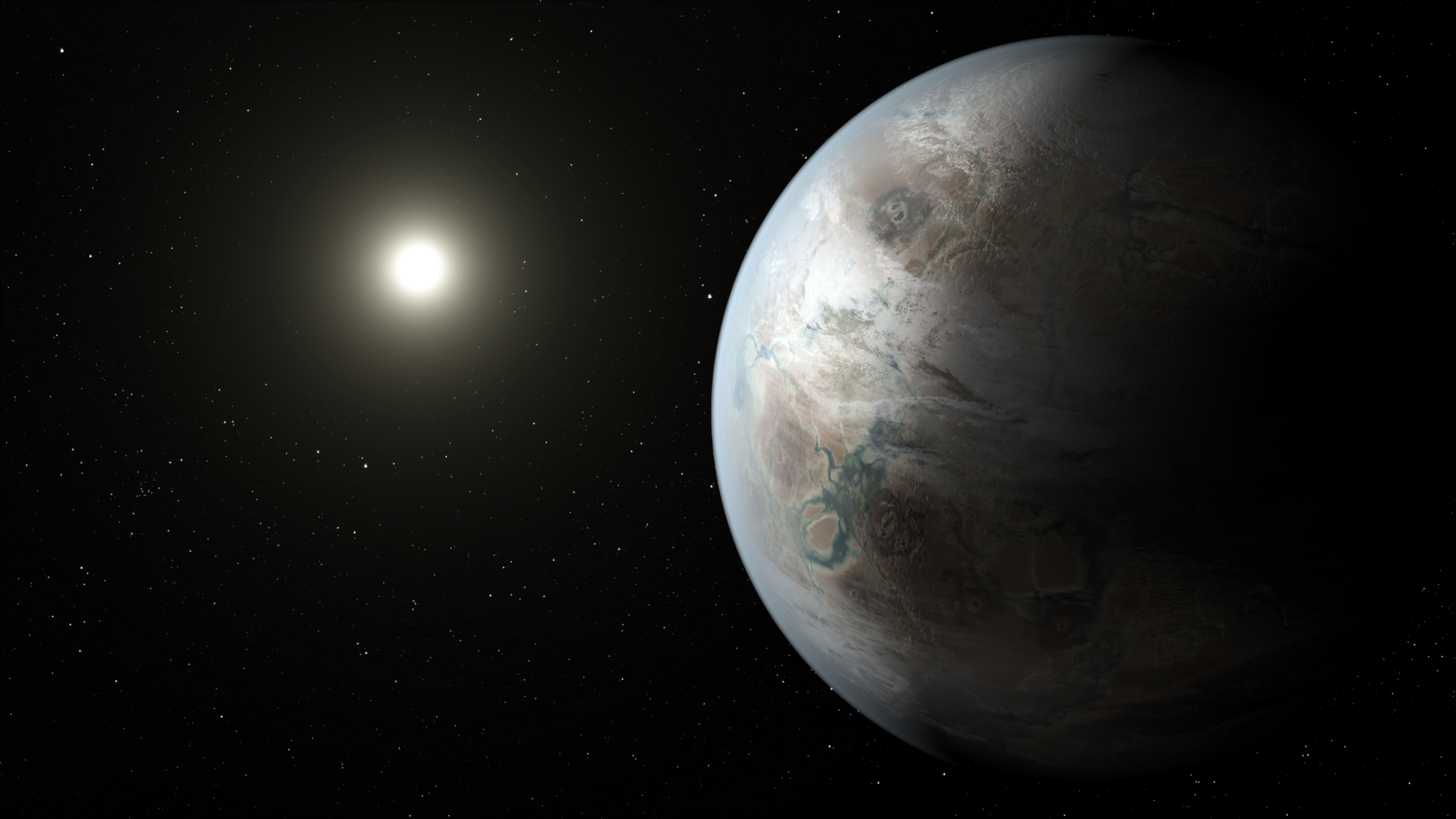 This artist's concept depicts one possible appearance of the planet Kepler-452b, the first near-Earth-size world to be found in the habitable zone of star that is similar to our sun. The habitable zone is a region around a star where temperatures are right for water -- an essential ingredient for life as we know it -- to pool on the surface. Scientists do not know if Kepler-452b can support life or not. What is known about the planet is that it is about 60 percent larger than Earth, placing it in a class of planets dubbed "super-Earths."
This artist's concept depicts one possible appearance of the planet Kepler-452b, the first near-Earth-size world to be found in the habitable zone of star that is similar to our sun. The habitable zone is a region around a star where temperatures are right for water -- an essential ingredient for life as we know it -- to pool on the surface. Scientists do not know if Kepler-452b can support life or not. What is known about the planet is that it is about 60 percent larger than Earth, placing it in a class of planets dubbed "super-Earths."Listen
By Sara Hammond, Arizona Science Desk
Scientists at the Fred Lawrence Whipple Observatory near Tucson supplied data to help NASA’s Kepler mission confirm an Earth-like planet in the “habitable zone” around a sun-like star 1400 light years from Earth.
David Latham, an astronomer with the Harvard-Smithsonian Center for Astrophysics, employed a high-resolution spectrograph at the observatory to characterize the star and determine the planet’s size.
The newly discovered planet is named Kepler 452b, and is the smallest planet to date discovered orbiting in the habitable zone, the area around a star where liquid water could pool on the surface of an orbiting planet.
NASA said this finding, announced Thursday, brings the total number of confirmed planets to 1,030.
Latham, who has been involved with the Kepler space telescope mission for 16 years, said he was brought into the investigation to make sure the star was a “good, valid target” for further study.
Because Kepler 452b is so far away, Harvard researchers Lars Buchhave said it’s not likely scientists can learn much more about this new planet.
“The host star is faint and it will be hard to do further observations and measurements of that system,” he said.
But, Latham said, “we’d really like to find systems like 452b around nearby stars.”
Latham said Whipple’s role in defining Kepler 452b “is just one example of the contributions we have made to characterizing the host stars for extra-solar planets. And it’s fair to say we do more of that than any other observatory.”
Whipple Observatory is owned and operated by the Smithsonian Astrophysical Observatory. It is located on the slopes of Mount Hopkins in the Santa Rita Mountains about 35 miles south of Tucson.
The Arizona Science Desk is a collaboration of public broadcasting entities in the state, including Arizona Public Media.

By submitting your comments, you hereby give AZPM the right to post your comments and potentially use them in any other form of media operated by this institution.